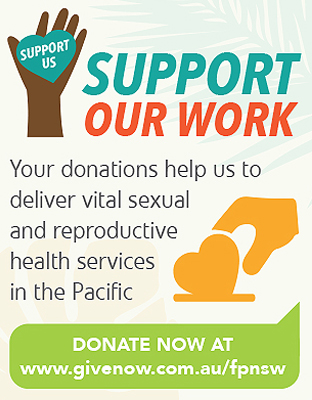Breast Awareness
It is important to know how your breasts usually look and feel so that, if there are any changes, you can seek help as soon as possible. Most breast changes are due to benign (non-cancerous) conditions. If you notice any changes to your breasts, see your doctor so you can rule out breast cancer. Breast cancer is the most commonly diagnosed cancer in women in Australia. One in eight Australian women will be diagnosed with breast cancer by the time they turn 85 years.
How do I be breast aware?
There are three steps to being breast aware.
- get to know the normal look and feel of your breasts
- see your doctor if you notice any unusual changes
- if you are aged 50 to 74, have a free mammogram at BreastScreen every 2 years
There is no right or wrong way to examine your breasts - these tips might help.
- use a mirror to become familiar with the usual look and shape of your breasts
- become familiar with the normal feel of your breasts at different times of the month - you might find this easiest in the shower or bath, lying in bed or when getting dressed

Women of all ages should be familiar with their breasts but it is more important the older you get as the risk of breast cancer increases with age.
If you have any breast problems or if you notice any of the following changes, you should see a doctor as soon as possible:
- a lump or lumpiness, especially if it is in one breast
- a change to the shape or size of your breast
- changes to the skin over the breast - like thickening, dimpling or redness
- unusual pain, particularly in one breast
- changes to the nipple - like turning inwards, crusting or redness
- nipple discharge
Most breast changes are not due to cancer - if you do have breast cancer, it's important to find it as early as possible so you can get the right treatment.
What is BreastScreen?
The Australian Government funds a national program called BreastScreen to test well women betweem the ages of 50 to 74 for early signs of breast cancer. This is done by a mammogram (X-ray of the breasts) every 2 years. This screening is only for women who don't have symptoms in their breasts. Women aged 40-49, and 75 and over can also participate in the program - you should discuss the pros and cons with your doctor first.
If any changes on the mammogram are found, you will be asked to have further investigations, such as a clinical examination, ultrasound and a biopsy. For more information see the BreastScreen website.
Are there other common breast problems I should know about?
Fibroglandular tissue
This is the name given to lumpy tissue in the breasts. It is very common. The lumpiness tends to vary throughout the menstrual cycle due to the influences of changing hormone levels.
Breast cyst
This lump is a fluid-filled sac which forms within the breast tissue. Sometimes there can be several cysts present at once. Cysts can be painful and can alter in size with the menstrual cycle. They usually affect women between the ages of 35 and 50. Any new lump should be assessed by your doctor.
Fibroadenoma
This benign breast lump which consists of glands and non-cancerous fibrous tissue and is often smooth, firm and mobile. It is common and usually affects women between the ages of 15 to 30. You may have more than one fibroadenoma at the same time. Fibroadenomas should be assessed your doctor.
Mastalgia (breast pain)
Breast pain is often linked to the menstrual cycle. It is more common just before the period starts due to hormonal activity and fluid retention.
Pain in the breasts can affect all women but usually affects women between the ages of 30 to 50 and is not usually a sign of breast cancer or other breast disease. Your doctor will take a thorough history and examine you and possibly send you for some further tests to be sure that breast cancer is not the cause of the pain. Your doctor can give you advice about treatments for breast pain.
Nipple discharge
Discharge from the nipple (outside of normal breastfeeding) can be blood stained, watery or may even contain pus. Nipple discharge, especially if it is originating from one breast only, should be assessed by your doctor.
For more information
Family Planning NSW Talkline - www.fpnsw.org.au/talkline or 1 300 658 886
National Relay Service (for deaf people) - 13 36 77
TIS National's interpreting service - 131 450
Visit you nearest Family Planning NSW clinic - www.fpnsw.org.au/clinics
Family Planning NSW client factsheet - www.fpnsw.org.au/health-information/breast-health/breast-pain-mastalgia
BreastScreen NSW - www.breastscreen.nsw.gov.au
Cancer Council - www.cancer.org.au


